Ancient Egypt was a civilization of ancient North Africa, concentrated along the lower reaches of the Nile River in the place that is now the country Egypt. Ancient Egyptian civilization followed prehistoric Egypt and coalesced around 3100 BCE (according to conventional Egyptian chronology) with the political unification of Upper and Lower Egypt under Menes (often identified with Narmer). Today the remains of this once mighty covilization are spread across the whole modern country of Egypt. The history of ancient Egypt occurred as a series of stable kingdoms, separated by periods of relative instability known as Intermediate Periods: the Old Kingdom of the Early Bronze Age, the Middle Kingdom of the Middle Bronze Age and the New Kingdom of the Late Bronze Age.
Back to Africa / Middle East
Prehistoric Era
Prehistory is the period that witnessed the development of humankind and its experiences since man lived in caves and rock-shelters. As a scavenger and hunter, the prehistoric man made his tools from stone to help him meet his needs and provide him with protection against danger. The oldest known man-made lithictools in Egypt are dated back more than two-million years ago. These tools confim the human presence in Egypt as it was the path taken by the human migrations from Africa during the ancient world. Prehistoric Egypt
Predynastic Era
The Predynastic-period is the last stage of the Neolithic period, which preceded the invention of writing and the establishment of the state is the Dynastic period. It is characterised by the sedentary societies on the banks of the River Nile and the emergence of cultural centers. During the sixth millennium BCE, the Egyptians were aware of the agriculture and were constructing silo-structures for storing grain. Predynastic Egypt
Dynastic Egypt
The history of Dynastic Egypt spans approximately three millennia, commencing around 3100 BCE with the unification of Upper and Lower Egypt by Pharaoh Menes/Narmer and culminating in the Roman conquest in 30 BCE following the death of Cleopatra VII. This extensive period is conventionally segmented into key phases: the Early Dynastic Period, the Old Kingdom (known for monumental pyramid construction), the Middle Kingdom (characterized by political stability and cultural fluorescence), and the New Kingdom (an imperial age of military expansion and temple building). These periods of centralized authority were interspersed with intermediate periods of political fragmentation and foreign domination (Hyksos, Nubians, Persians). Throughout its history, dynastic Egypt maintained a highly centralized theocratic state apparatus, characterized by a sophisticated bureaucracy, a complex polytheistic religious system centered on the divine pharaoh, and significant artistic and architectural achievements that established a remarkably consistent cultural identity within the Nile Valley. History of Ancient Egypt
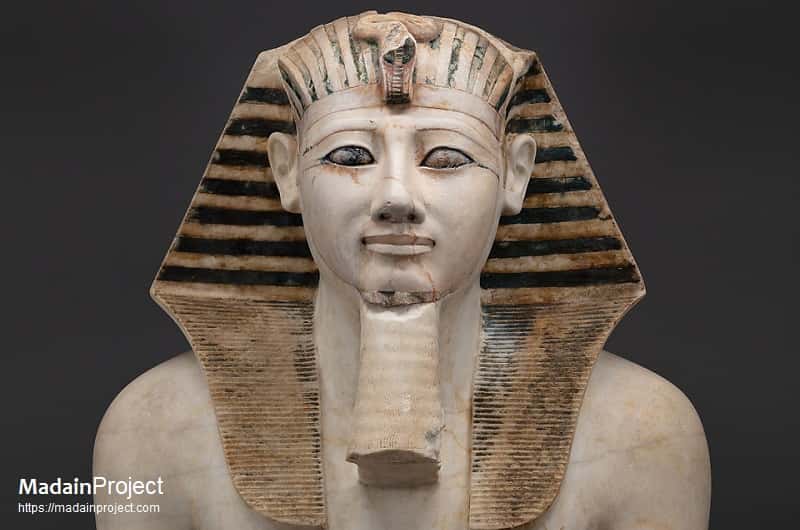
Thutmose III (reigned circa 1479–1425 BCE), the sixth pharaoh of the Eighteenth Dynasty, is widely regarded as one of ancient Egypt's most effective military strategists and empire builders. Following a lengthy co-regency with his stepmother, Queen Hatshepsut, Thutmose III assumed sole rule and initiated a series of seventeen military campaigns into the Levant and Nubia, effectively establishing Egypt's largest territorial empire. Read more

Ramesses II, the third pharaoh of the Nineteenth Dynasty of the New Kingdom of Egypt, reigned for approximately 66 years (circa 1279–1213 BCE), an exceptionally long tenure that placed him among Egypt’s most consequential and influential monarchs. Often referred to by his epithet, "Ramesses the Great", his reign is characterized by vigorous military campaigning, extensive monumental construction, and significant diplomatic efforts. Read more
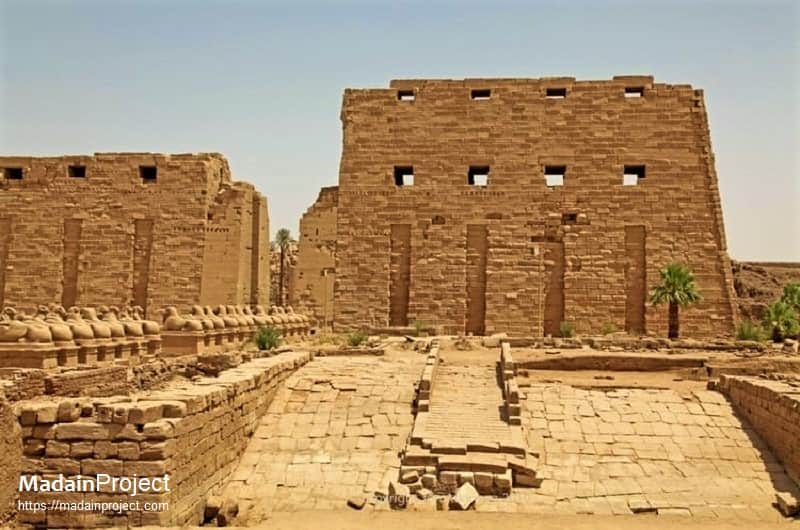
Ancient Luxor, situated on the banks of the Nile River, is often referred to as an open-air museum due to its incredible wealth of archaeological treasures. For thousands of years, this city was the epicenter of Egyptian civilization and the capital of the mighty New Kingdom. Read more

Giza is primarily renowned for its majestic pyramids, notably the three large Pyramids, enigmatic Sphinx, grand tombs and mortuary temples, dating back to the Fourth Dynasty (circa 2600-2500 BCE), when these incredible monuments were constructed. Read more
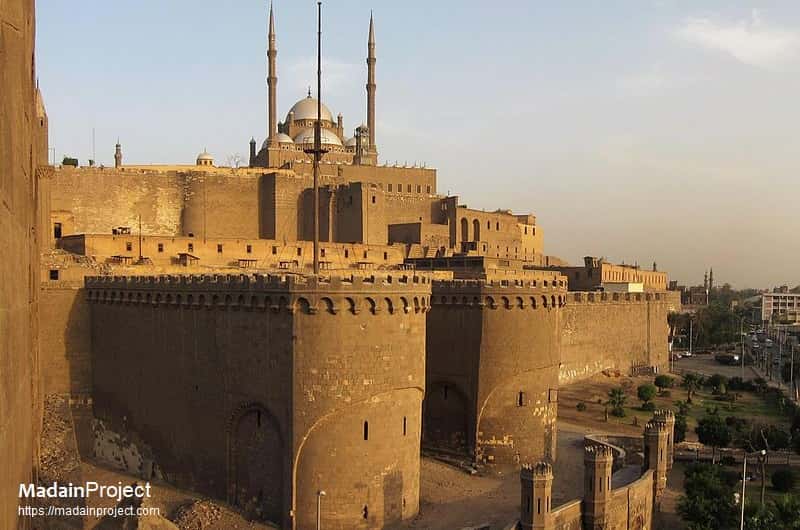
Founded in 641 CE, its archaeological sites, hidden beneath the bustling modern metropolis, provide a fascinating portal to the past, from the grandeur of the Giza Pyramids to the labyrinthine streets of the Muslim district of ancient Cairo. Read more
Famine in Ancient Egypt was a critical and recurring crisis shaped by the dependence on the Nile’s annual inundation. When the river failed to flood adequately, agricultural yields declined, leading to food shortages, economic distress, and social unrest. Ancient inscriptions, tomb records, and later historical accounts document numerous famines that affected different periods of Egyptian history. These events were often linked to natural disasters, political instability, or broader climate shifts, highlighting the vulnerability of even a highly organized society to the unpredictability of nature.
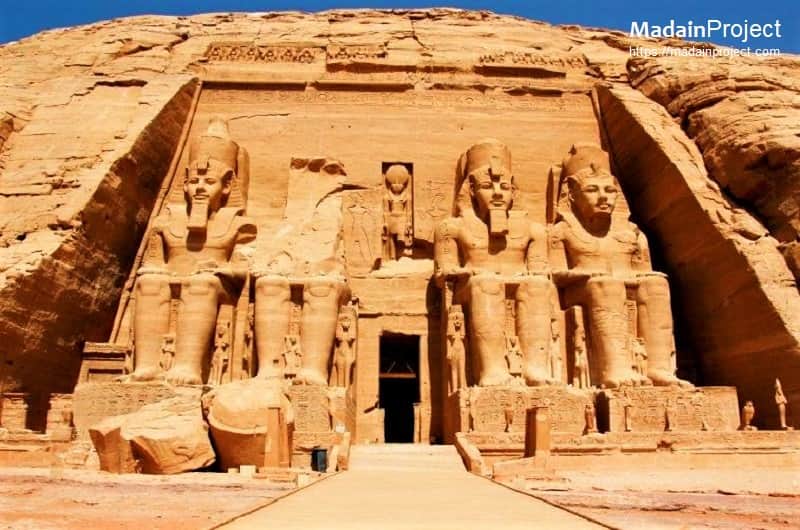
The megalithic temples of Abu Simbel, commissioned by the pharaoh Ramses II, represent not only a testament to his power and devotion but also a remarkable archaeological treasure trove that offers profound insights into Egypt's cultural, religious, and historical evolution. Read more

This obelisk, hewn from a single piece of red granite, originally stood in the Egyptian city of Karnak during the reign of Pharaoh Thutmose III, around 1450 BCE. It was later moved to the iconic Hippodrome of Constantinople by the Roman Emperor Theodosius I in the late fourth century CE. Read more

It is one of the oldest surviving structures in the Nubian region, dating back to the New Kingdom period, with its construction initiated during the reign of Thutmose III. The temple was dismantled and relocated to higher ground, where it now stands as part of a complex of relocated temples known as the "Nubian Monuments". Read more
Over the centuries The Theban Mapping Project is an initiative aimed at creating a comprehensive and accurate digital map of the Valley of the Kings and other key archaeological sites in Thebes, Egypt. The project was founded in 1997 CE by Egyptologist Dr. Kent Weeks and has since grown into a major international effort to document and preserve the rich cultural heritage of this ancient city. The ultimate goal of the project is to create a complete digital atlas of the Valley of the Kings, including all known tombs and monuments.
The construction of the Aswan High Dam in the mid-20th century brought forth the need to protect Egypt's invaluable ancient monuments from submersion. To achieve this, a colossal international effort was launched to dismantle, transport, and reassemble these architectural marvels on higher ground or to different museums around the world. Among the most famous of these relocated monuments are the grand temples of Abu Simbel, originally built by Pharaoh Ramses II, and the Temple of Philae, dedicated to the goddess Isis.

The Temple of Derr was constructed during the New Kingdom period (circa 16th and 11th century BCE) of ancient Egypt, specifically during the reign of Pharaoh Ramses II, one of Egypt's most prolific builders. Dedicated to the god Amun-Ra, the Derr Temple served as a religious marker and a symbol of Egyptian power and influence in ancient Nubia. Read more
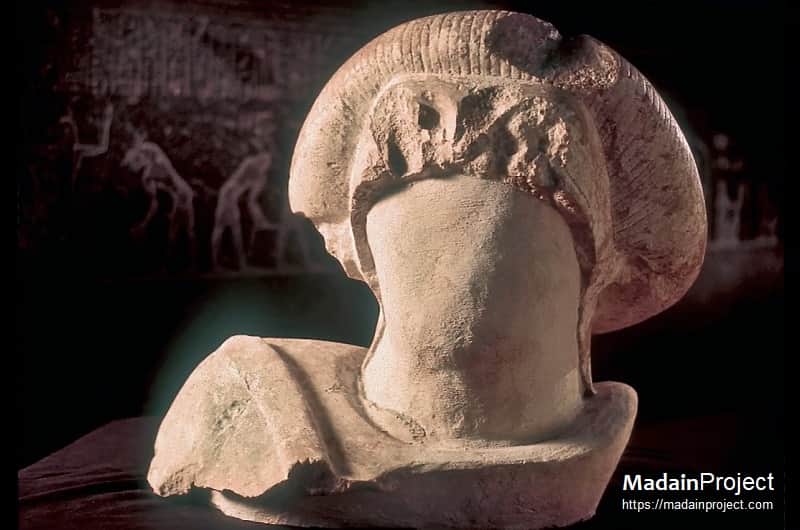
Manfred Bietek, while excavating tombs in the ancient Egyptian city of Avaris, discovered the remains of a large statue. Over a two-year period, 1986 to 1988, the team uncovered its broken pieces and was able to put much of it back together. The statue is significant because it provides evidence of the cultural and religious diversity in ancient Egypt. Read more

Ancient Memphis, located on the western bank of the Nile River in Egypt, was a thriving metropolis that served as the capital of the Old Kingdom for many centuries. Renowned for its strategic location near the Giza Plateau, Memphis played a pivotal role in the political, cultural, and religious life of ancient Egypt. Its original Egyptian name, "Men-nefer," meaning "Enduring and Beautiful," aptly captured the essence of this majestic city. Read more

Situated on the picturesque island of Philae, just south of Aswan, this complex represents a captivating blend of history, mythology, and spirituality of ancient Egypt. This sacred site, dedicated primarily to the goddess Isis, boasts a lineage dating back to the Ptolemaic and Roman periods, spanning centuries of devotion and reverence. Read more

Founded during the Middle Kingdom of Egypt, Buhen was primarily a military stronghold and a key trading hub, regulating trade along the Nile and maintaining control over the valuable resources of Nubia. One of the most fascinating aspects of Buhen's history is the cultural exchange between the Egyptian and Nubian civilizations. Read more
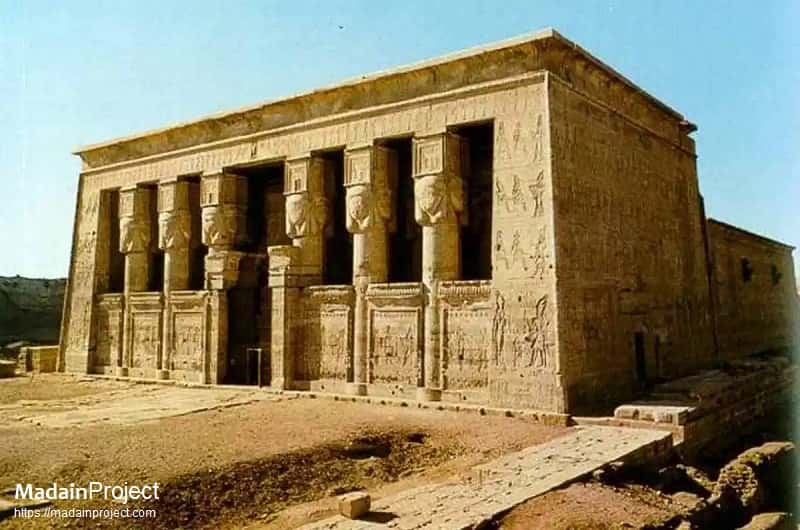
Dendera, situated on the west bank of the Nile River in modern-day Egypt, it is an ancient Egyptian Temple Complex dedicated to goddess, originally built during the Old Kingdom period. The temple, adorned with intricate carvings, colorful reliefs, and a stunning astronomical ceiling, is a masterpiece of Egyptian architecture and artistry. Read more
A comprehensive list of the known tombs and burials in the Valley of the Kings. The list includes descriptions and actual photographs of the tombs. This article deals with the of burials in the Valley of the Kings, in Thebes (modern Luxor in Egypt) and nearby areas. Egyptologists use the acronym KV (standing for Kings' Valley) to designate tombs located in the Valley of the Kings. Tombs that have been discovered since then have been allocated a sequential KV number (those in the Western Valley are known by the WV equivalent) in the order of their discovery. The tombs in the Valley of the Kings were designed to protect the pharaohs’ mummified bodies and treasures from tomb robbers.
An ancient Egyptian painting in the tomb of 12th Dynasty official Khnumhotep II, at Beni Hasan (circa 1900 BCE), shows a group of West Asiatic foreigners, possibly Canaanites, labelled as Aamu, including the leading man with a Nubian ibex labelled "Abisha the Hyksos" (Heqa-kasut for "Hyksos").
The Aamu people from this relief are further labeled as being from the area of Shu, which may be identified, with some uncertainty, with the area of Moab in southern Palestine, around the Jordan river, or generally the southern Levant, just east of the Jordan river and the Red Sea.

The origins of the temple-island can be traced back to the Old Kingdom of Egypt, and it was expanded and renovated by various pharaohs throughout the centuries. One of the island's most significant historical sites is the Temple of Satet, dedicated to the goddess Satet, associated with the Nile's annual inundation. Read more

The ancient temple complex of Edfu is one of the best-preserved examples of Ptolemaic and Roman-era architecture in Egypt and provides a fascinating glimpse into the religious practices and beliefs of the time. Also known as the Temple of Horus, was constructed between 237 and 57 BCE during the Ptolemaic dynasty. Read more

The Temple of Khnum in Esna was primarily constructed during the Ptolemaic and Roman periods, with later additions made during the reign of the Roman Emperor Claudius. It is famous for its excellently preserved hypostyle hall supported by intricately carved columns and stunning astronomical ceiling. Read more
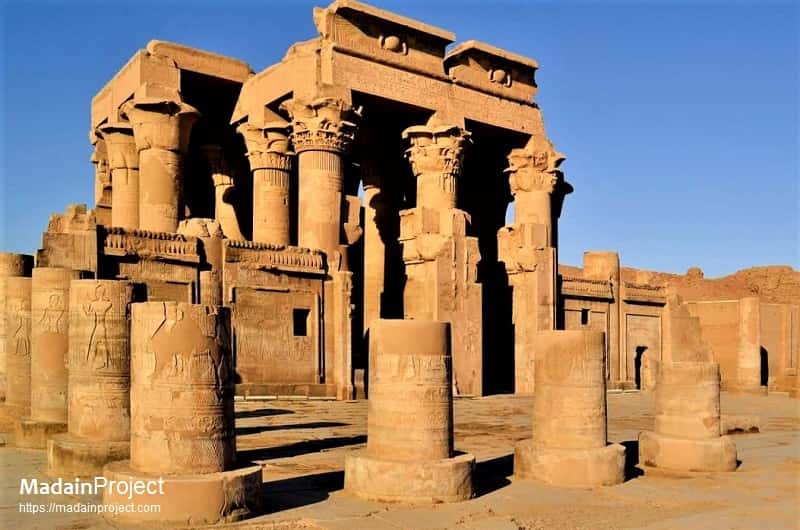
This temple is distinct because it is a double temple, featuring two symmetrical halves dedicated to two ancient Egyptian deities, Sobek and Horus the Elder, reflecting the duality and balance inherent in ancient Egyptian religious beliefs. Read more

The Qubbet el-Hawa necropolis, situated on the west bank of the Nile River in Aswan, Egypt, is an extraordinary archaeological site and necropolis that holds the tombs of nobles, officials, and high-ranking individuals from Egypt's Middle Kingdom and New Kingdom periods. Read more

The temples of Wadi es-Sebua, so-called because of the sphinx-lined approach to the temple forecourts), is a pair of New Kingdom Egyptian temples, including one speos temple constructed by the nineteenth Dynasty Pharaoh Ramesses II, in Lower Nubia. Read more
The tombs of the nobles in Egypt are a group of ancient burial sites located throughout the country, which were used by the non-royal elite during the New Kingdom period. These tombs were built for wealthy officials, military leaders, and other prominent individuals, and were typically located near their place of work or in the nearby hills. Many of the tombs of the nobles are decorated with colorful and intricate paintings and carvings that depict scenes from Egyptian mythology, religious rituals, and daily life.
Explore
List of the Nobles' Tombs in Amarna / Aswan / Luxor / Saqqara
In 1802 the stone arrived in England and was offered to the British Museum, where it has remained since. It is part of a grey and pink granodiorite stela bearing priestly decree concerning Ptolemy V in three blocks of text: Hieroglyphic (14 lines), Demotic (32 lines) and Greek (54 lines). The inscription is a decree passed by a council of priests, one of a series that affirm the royal cult of the 13 year-old Ptolemy V on the first anniversary of his coronation.
This 3D model of the Rosetta Stone was publiched by the British Museum, as part of their larger attempt to capture as many of our iconic pieces from the collection.
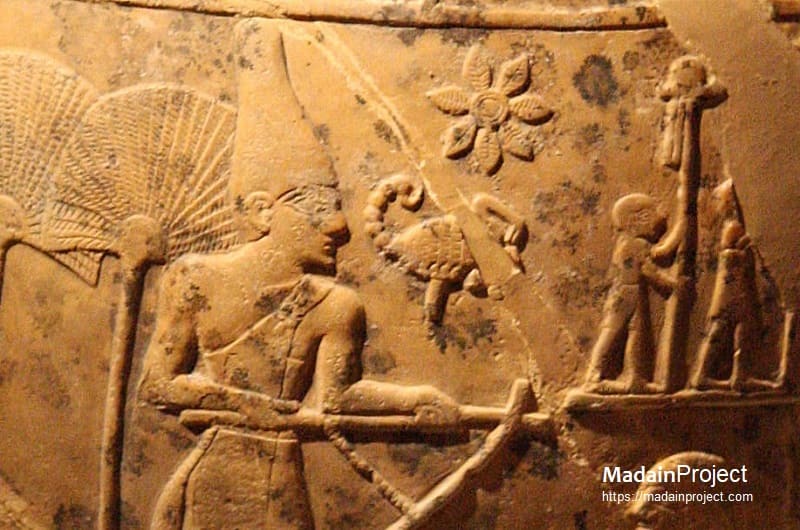
Nekhen (Hierakonpolis), an ancient city in Upper Egypt, was a pivotal religious and political center during the Predynastic (circa 4500–3100 BCE) and Early Dynastic periods. Located on the west bank of the Nile, it is one of the largest and most archaeologically rich predynastic sites in Egypt, providing crucial insight into the origins of Egyptian civilization. Known as the "City of the Falcon" to the Greeks, Nekhen was the cult center for the hawk god Horus, a deity closely associated with Egyptian kingship and legitimacy. Read more
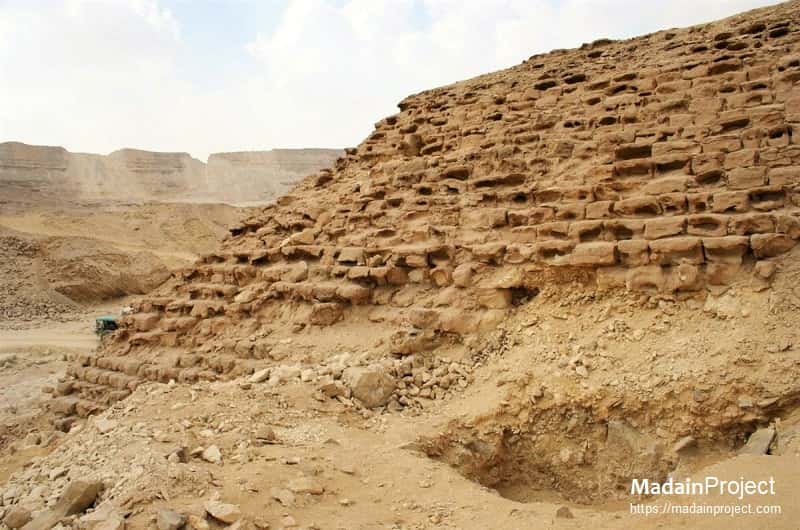
The Sadd el-Kafara dam was built, using a combination of stone blocks and mudbrick, during the Old Kingdom period of ancient Egypt, which spanned from around 2686 to 2181 BCE. This makes it one of the oldest known dams in Egypt and the world. It is situated in the Wadi al-Garawi, near the modern town of Helwan, south of Cairo. Read more

Located in the vast desert landscape southwest of Cairo, this sprawling necropolis has been a sacred burial ground for millennia, serving as the final resting place for pharaohs, nobles, and officials. Saqqara's historical significance extends back over 4,000 years, and it is most renowned for being the site of the iconic Step Pyramid of Djoser. Read more

Dahshur, a lesser-known gem of ancient Egypt, possesses a rich archaeological legacy that speaks volumes about the evolution of Egyptian monumental architecture, ingenuity and aspirations. The Bent Pyramid and the Red Pyramid are two of the most iconic architectural marvels of the Old Kingdom built in the ancient necropolis of Dahshur. Read more

Dedicated to the goddess Isis, it served as a center of worship and pilgrimage during the Ptolemaic and Roman periods. The Taposiris Magna Temple, with its grand colonnades and hidden chambers, has beckoned explorers and archaeologists. More recently it has been proposed as the burial site of queen Cleopatra. Read more

Also known as the temple of Sety at Kanais, it was built by Sety I during his reign (circa 1290 to 1279 BCE) and dedicated to god Amun-re. Situated on the Edfu to Red Sea route (once a main artery from the Contra Apollinopolis (Edfu) to the Graeco-Roman Emporium), used by gold miners from the earliest time, it was a watering station along the path. Read more
This pyramid was built approximately between 2532 and 2515, during the reign of Pharaoh Menkaure. He was a Pharaoh of the Fourth Dynasty. We are here in the middle of the old empire. The Menkaure Pyramid is the third pyramid of the plateau of Giza. Much smaller than Khufu and Khafra, it marks the end of the era of giant pyramids. If it seems less interesting than the other two, it also introduces a number of innovative architectural elements. The pyramid of Menkaure was built in the Necropolis of Giza, southeast of the pyramid of his father, which was built in the south-east of that of his own father. This choice was not trivial.
Also known as the Djeser-Djeseru, the "Holy of Holies" in Ancient Egyptian language, the temple was built for the 18th dynasty Pharaoh Hatshepsut, the longest reigning female pharaoh, regarded by historians as one of the most successful leaders of Ancient Egypt and as the "first great woman in history". The sanctuary is a mortuary, or memorial, temple, constructed in honour of the pharaoh under which it was built. Despite being around 3500 years old, its long colonnaded terrace almost looks like contemporary architecture, and the elegant symmetry contrasts strikingly with the rugged cliff face that looms above it. In its heyday, the Temple of Hatshepsut would have been surrounded by glorious gardens filled with exotic trees and plants, reached via a sphinx-lined avenue. Over the millennia, as well as the usual erosion and decay suffered by the ancient monuments, the temple was vandalised by Haptshepsut's stepson Tuthmosis III and the early Christians, amongst others.

Built during the thirteenth century BCE, the Ramesseum stands as a testament to the grandeur of ancient Egyptian architecture and the enduring legacy of one of the most influential rulers in Egyptian history. The temple complex is adorned with colossal statues, intricate reliefs, and sprawling courtyards, showcasing the artistic and engineering prowess of the New Kingdom period. Read more
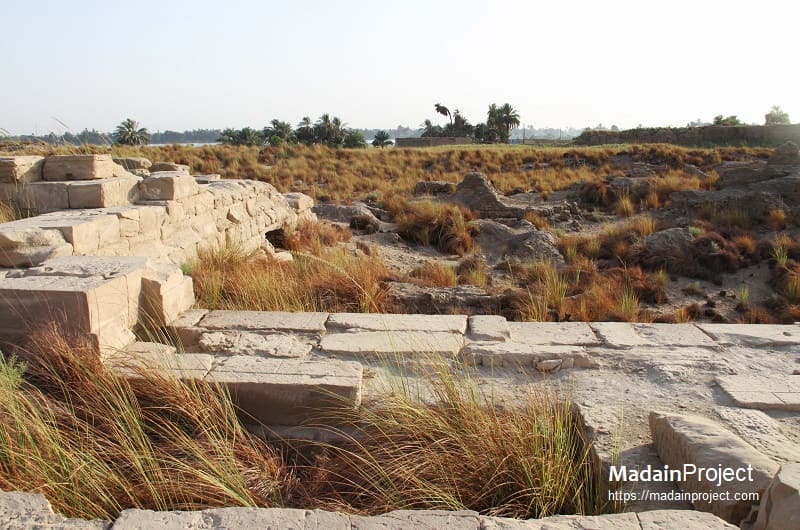
el Kab, known as Nekheb in ancient times, is an archaeological site located on the east bank of the Nile River in the historic region of Upper Egypt. It was an important settlement in antiquity and has a rich history dating back to ancient times. During the Early Dynastic period, el Kab served as the capital of the third nome (administrative division) of Upper Egypt. Read more
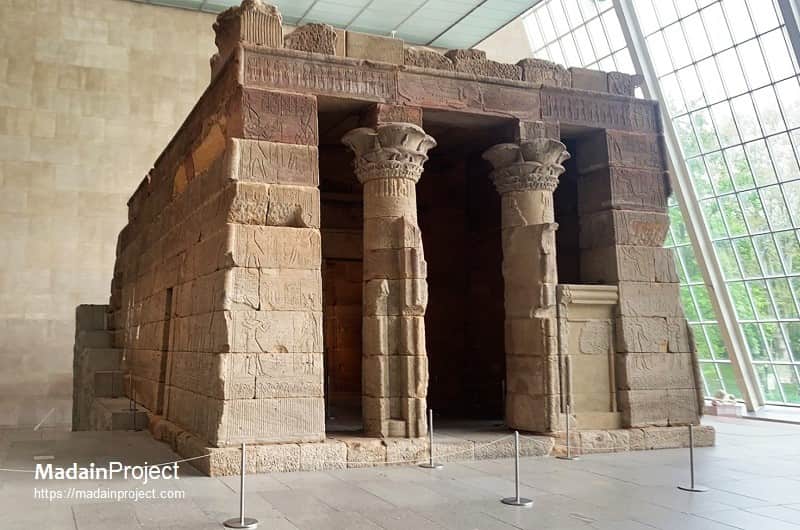
The Temple of Dendur is a Roman-period Egyptian temple originally located along the Nile River in the Nubian region of southern Egypt. Commission Constructed from Nubian sandstone around 15 BCE, during the reign of Emperor Augustus, it was dedicated to the goddess Isis and two deified Nubian brothers, Pedesi and Pihor. Its architecture, though modest in size, features traditional Egyptian design elements, including a pylon gate, lotus-and-papyrus columns, and extensive relief carvings that depict Augustus as a pharaoh making offerings to Egyptian gods. Read more
The hall was built by Seti I who inscribed the northern wing. The outer walls depict Seti’s battles. The massive columns in the hypostyle hall dwarfs the people and there is still some paint surviving on the under side of the capitals. The hall covers an area of 50,000 square ft (5,000 square meters) and filled with 134 gigantic stone columns with 12 larger columns standing 80 feet (24 meters) high lining the central aisle. The southern wing was completed by Ramesses II but he usurped the decorations of his father along the main processional walk ways. The south wall is inscribed with a record of Ramesses II’s peace treaty with the Hittites which he signed in 21st year of his reign. Later pharaohs including Ramesses III, Ramesses IV and Ramesses VI added inscriptions to the walls and the columns.
Karnak Temple Complex | Precinct of Amun-re | Great Hypostyle Hall
Pharaoh Khufu began the first Giza pyramid project, circa 2550 BCE. It was the first of the pyramids to be built on the Giza Plateau. It was built as a tomb for the ancient Egyptian pharaoh Khufu over a period of around 27 years. It is believed that Khufu's cousin and vizier, Hemiunu was the architect of the Great Pyramid. His Great Pyramid is the largest in Giza and towers some 481 feet (147 meters) above the plateau. Its estimated 2.3 million stone blocks each weigh an average of 2.5 to 15 tons. Construction of the Great Pyramid was completed around 2560 BCE, and it was the tallest man-made structure in the world for over 3,800 years.

Ancient Abydos, known in ancient Egyptian as Abdju, was one of the most sacred cities of Egypt, situated along the Nile River in Upper Egypt. Its significance dates back to the early dynastic period and continued throughout the history of ancient Egypt. The city was primarily associated with Osiris, the god of the afterlife, resurrection, and regeneration, making it a key religious and cultural hub. Read more

The Medinet Habu is an archaeological site of an ancient Egyptian mortuary temple of Ramesses III, other royal and cultic chapels, storage facilities, and fortified enclosures that supported its role as an important cultic center. The complex remained an active religious site throughout the Third Intermediate and Late Periods, with modifications reflecting Egypt’s changing political and cultural landscape. Its strategic location and architectural innovations make it a critical site for understanding the religious, military, and administrative priorities of the Ramesside period. Read more

The Saint Catherine Monastery was originally founded in the fourth century CE, around the year 330-360 CE, by the Byzantine Emperor Constantine's mother, Helena. It was built at the supposed site of the biblical burning bush from which God spoke to Moses. The monastery was established to honor Saint Catherine of Alexandria, a Christian martyr. Read more

Bordered by the Mediterranean Sea to the north and the Red Sea to the south, the Sinai Peninsula is not only a geographically distinctive part of Egypt but also a place of profound historical and cultural importance. According to biblical accounts, it was in the Sinai Desert that Moses received the Ten Commandments from God. Read more
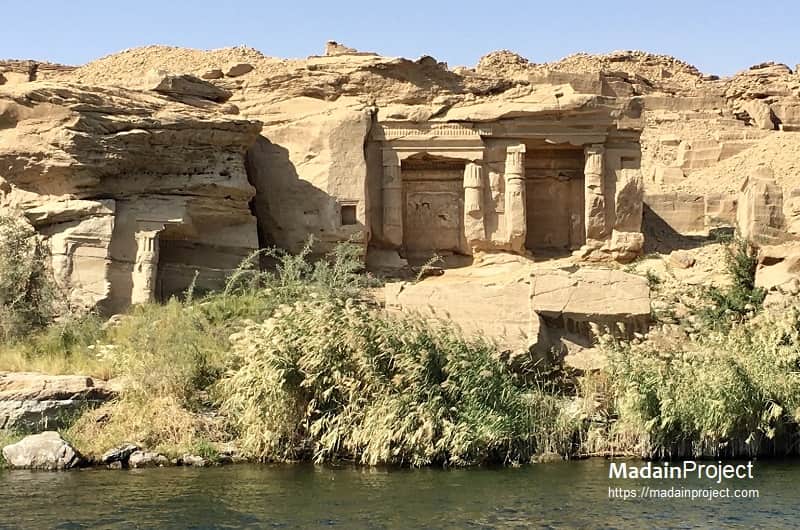
Gebel el-Silsila (جبل السلسلة), also known as Khenu (Egyptian: ẖny), meaning "The Place of Rowing", is an It is rxtensive site situated along both banks of the Nile River between Edfu and Kom Ombo in southern Egypt. It is renowned for its ancient sandstone quarries, rock cut temples, shrines and stelae. Read more
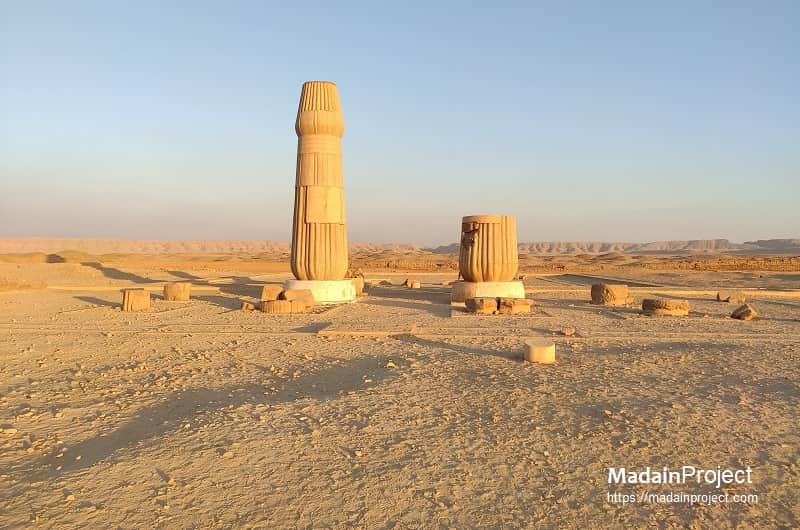
The ruins of the ancient city of Akhetaten, known today as Tell el-Amarna, represent a short but transformative period in ancient Egyptian history. Founded by Pharaoh Akhenaten (formerly Amenhotep IV) around 1346 BCE, Akhetaten served as the capital during his radical religious reforms, when he abandoned Egypt's traditional polytheistic religion in favor of worshipping a single deity, the sun disk Aten. Read more
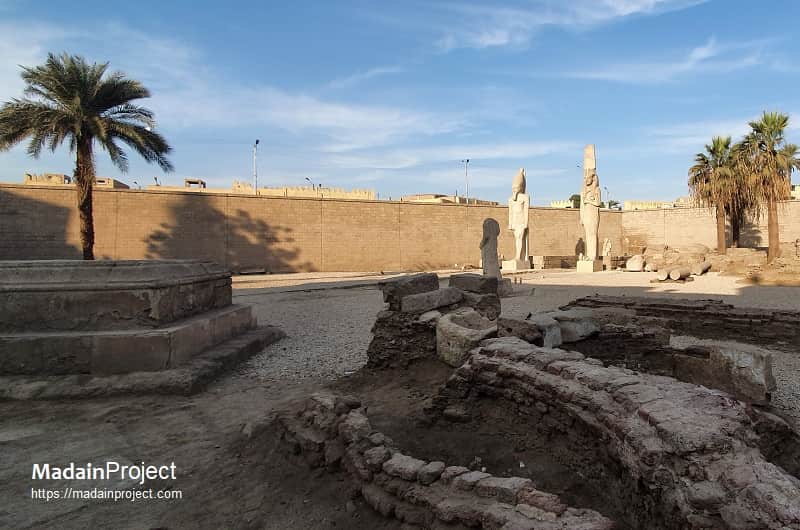
Ancient Akhmim was a major urban and cultic center in Upper Egypt, situated on the east bank of the Nile and serving as the capital of the ninth Upper Egyptian nome. Known in antiquity as Ipu or Khent-Min, and later as Panopolis under Greek and Roman influence, the city functioned as a regional administrative hub and the principal cult center for the fertility god Min. Its significance is attested through continuous occupation from the Predynastic period into late antiquity. Read more

The Kalabsha Temple is an ancient Egyptian temple complex located in the region of Kalabsha, situated along the banks of Lake Nasser in southern Egypt. This temple is dedicated to the worship of various deities including Nubian Solar deity; Mandulis, including the god Mandulis, and was originally constructed by Emperor Augustus around 20 BCE. Read more
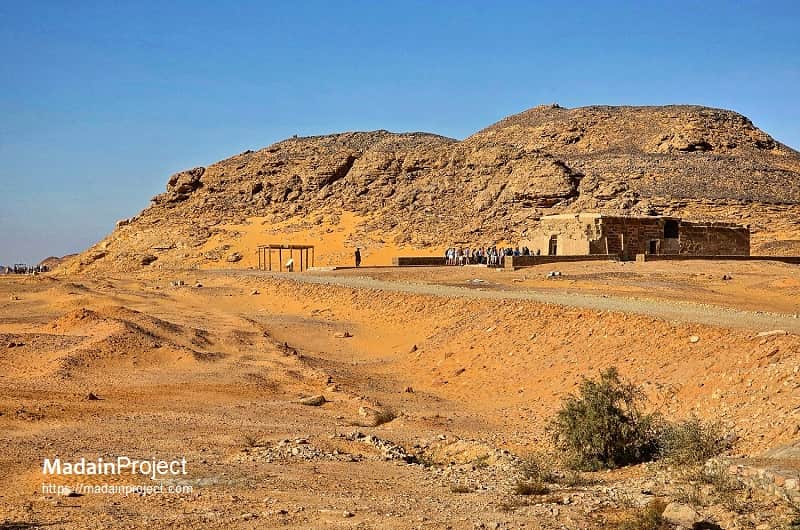
New Amada" is the site where the Temple of Amada, the Temple of Derr, and the Tomb of Pennut were relocated in the 1960s to save them from the rising waters of Lake Nasser following the construction of the Aswan High Dam. Located near Aswan, this reconstructed complex houses some of the oldest and best-preserved ancient monuments from the Nubian region, with significant original colored reliefs and hieroglyphs still visible. Read more
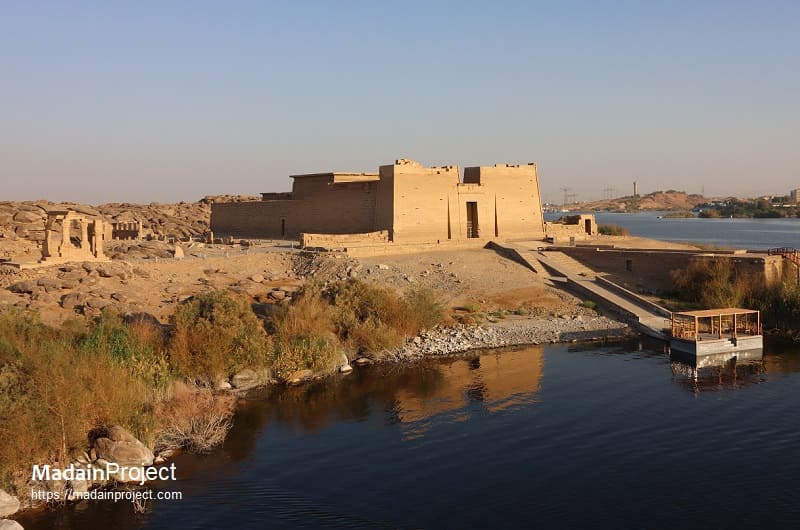
The New Kalabsha site in Egypt is a promontory (now a small island) near the Aswan High Dam where several ancient temples and monuments were relocated during the 1960s to save them from being submerged by Lake Nasser. The UNESCO-led rescue effort moved the monuments from their original locations in Lower Nubia to higher ground. Read more

The ancient Egyptian nome of Nekhen, was a preeminent political and religious center of Upper Egypt during the Naqada periods (circa 4000–3100 BCE) and the Early Dynastic Period (circa 3100–2686 BCE). Archaeological investigations at the site, located on the west bank of the Nile near modern Kom el-Ahmar, have revealed crucial evidence for the origins of Egyptian kingship and state formation. As the cult center for the falcon deity Horus, a key figure in royal ideology, Nekhen retained its religious significance long after its political dominance waned. Read more

The al-Maharraqa Temple is an ancient Egyptian religious structure devoted to the worship of the deities Isis and Serapis. This temple had its original location in the town of al-Maharraqa (the extreme southern frontier of Roman Egypt), also known as Hierasykaminos, situated in Lower Nubia. The temple was converted to a church in the sixth century CE. Read more
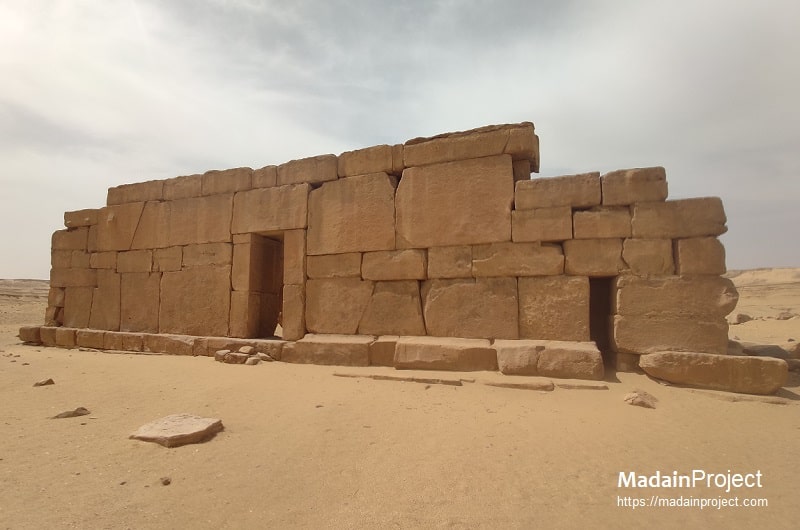
The Qasr el-Sagha temple is an uncompleted and uninscribed Egyptian sanctuary situated in the desert north of Lake Qarun, in the Faiyum region. The architectural plan strongly suggests a Middle Kingdom construction date, likely during the 12th Dynasty, potentially under Senusret II or Amenemhet III/IV. Its construction employs a unique, quasi-megalithic technique utilizing massive, irregularly shaped limestone blocks that fit tightly together without mortar, a style some early observers anachronistically associated with Old Kingdom architecture or even Inca masonry. Read more

The archaeological site of Tuna el-Gebel, serving as the necropolis for the ancient city of Hermopolis Magna (modern el-Ashmunein), is one of Middle Egypt's most significant sites for understanding the cultural and religious syncretism of the Late Period through the Greco-Roman era. Located on the western desert edge, the site is distinguished by both a sprawling human cemetery and an immense ibiotapheion, or animal necropolis, primarily dedicated to the god Thoth. Read more
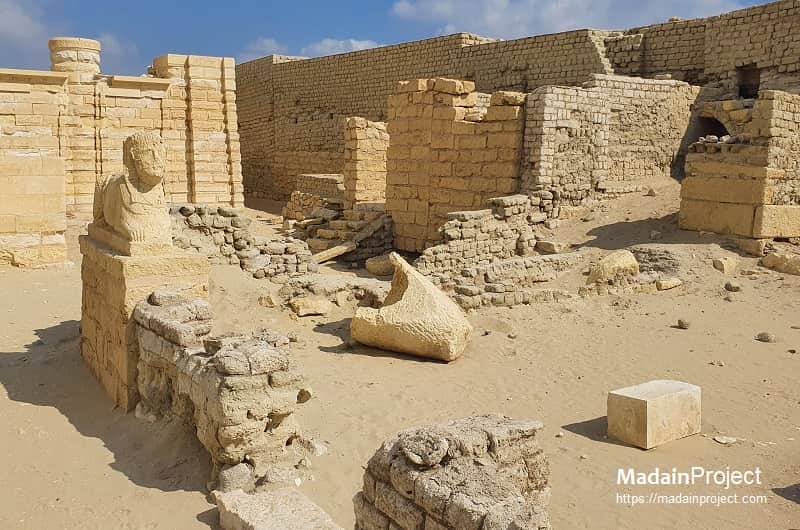
The archaeological site of Medinet Madi (ancient Egyptian Dja, Greco-Roman Narmouthis) in the Faiyum region is highly significant for preserving one of the only standing and substantially intact temples from the Middle Kingdom period, a rarity in Egyptian archaeology. The earliest structure, constructed during the reigns of 12th Dynasty pharaohs Amenemhat III and Amenemhat IV (c. 1855–1799 BCE), was dedicated to the local triad of the cobra-goddess Renenutet (a harvest deity), Sobek (the crocodile god), and their son, Horus. Read more
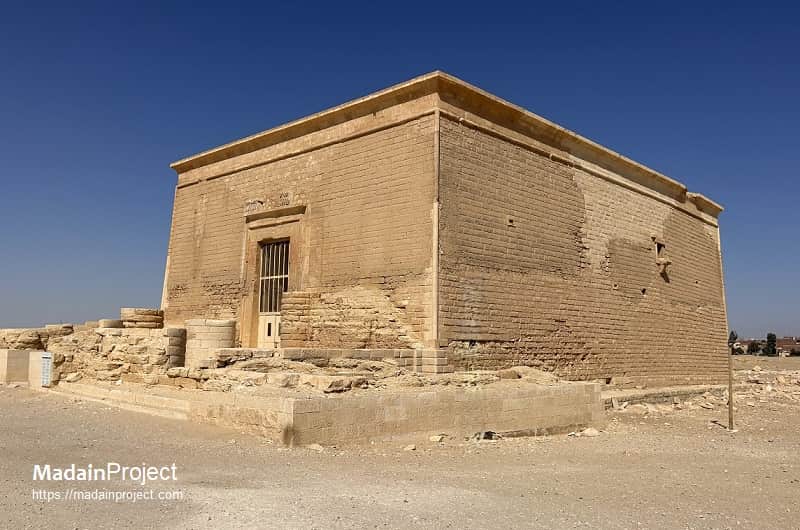
The Qasr Qarun temple, located at the western edge of Lake Qarun in the Faiyum Oasis, is a remarkably well-preserved example of Ptolemaic architecture, dating primarily to the 3rd to 2nd centuries BCE. The structure was the principal religious edifice of the ancient Greco-Roman town of Dionysias, serving as an administrative and religious center dedicated to the syncretic deity Sobek-Ra, the crocodile god of the region. Read more
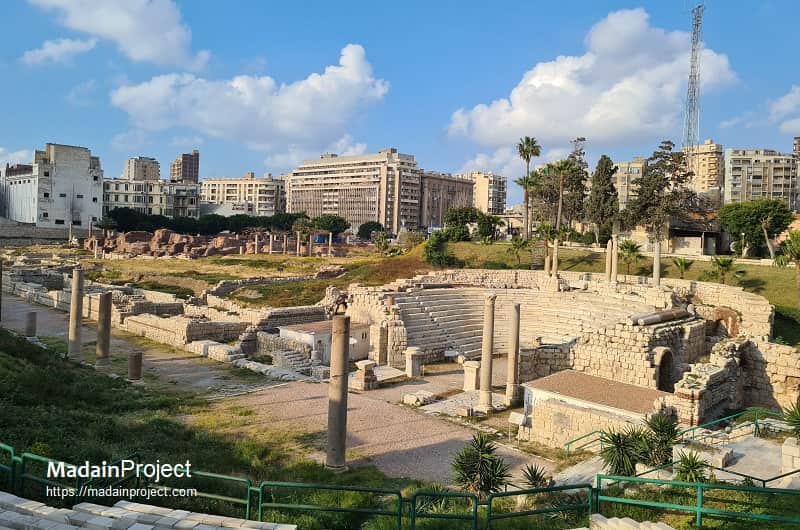
The archaeological complex of Kom el-Deka (Arabic for "Hill of Rubble"), located in the civic center of modern Alexandria, is considered the single most comprehensive above-ground site for understanding the urban morphology and social life of the ancient city during the Roman and Byzantine periods (1st-7th centuries CE). The excavations, primarily conducted by the Polish Centre of Mediterranean Archaeology of the University of Warsaw since the 1960s, have unearthed a full civic quarter that serves as a microcosm of Alexandrian society. The site reveals a clear stratigraphic transition: an early Roman phase (1st-3rd centuries CE) characterized by opulent, spacious villas featuring elaborate mosaic floors, such as the well-preserved "Villa of the Birds," indicative of a wealthy residential elite. Read more
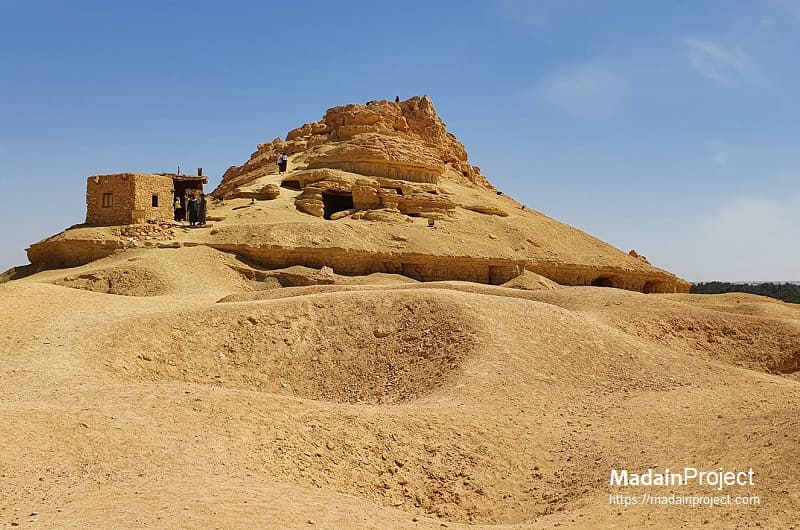
Gebel el-Mawta (Arabic for "Mountain of the Dead") is the prominent conical hill situated north of the urban center of the Siwa Oasis in the Western Desert of Egypt, serving as the primary necropolis for the ancient town of Shali. The site comprises several hundred rock-cut tombs dating predominantly from the Late Period (26th Dynasty) through the Ptolemaic and Roman eras (circa 664 BCE to 4th century CE). Read more

The Faiyum region, a natural depression west of the Nile Valley, constitutes a unique environmental and archaeological landscape in ancient Egypt, distinguished by its reliance on a channel of the Nile, the Bahr Yussef, which feeds into the large saltwater Lake Moeris (Birket Qarun). Unlike typical oases dependent on springs, Faiyum's fertility derived from Nile mud deposits, a feature that facilitated early agricultural communities dating to circa 5200 BCE, some of the earliest known in Egypt. Read more

The archaeological site of Taposiris Magna, situated approximately 45 kilometers west of Alexandria, represents a pivotal center of administration, trade, and religious activity during the Ptolemaic and Roman periods in Egypt. Established under Ptolemy II Philadelphus around the 3rd century BCE, the site is notable for its expansive ruins, including a fortified temple enclosure dedicated primarily to Osiris and Isis, and a vast adjacent necropolis. The preserved architectural remains exhibit a distinctive syncretism, blending traditional Egyptian pylons and enclosure walls with Hellenistic architectural elements such as Doric columns and antae, reflecting the bicultural environment of the era. Read more

The ancient Egyptian archaeological site of Hawara, located at the entrance to the Faiyum oasis, is primarily recognized as the necropolis established by the 12th Dynasty pharaoh Amenemhat III (circa 1855–1808 BCE) for his final burial place. The site features his pyramid, originally constructed with a mud-brick core and limestone casing, which now stands eroded due to the pillaging of its exterior stone in antiquity. Adjacent to the pyramid stood a massive mortuary complex, referred to as the "Labyrinth" by classical historians including Herodotus, Strabo, and Diodorus Siculus. Read more

The temple was dedicated to the goddess Isis and her divine child Harpocrates, also known as Horus the Child. Now displayed at the Rijksmuseum Van Oudheden, is notable for being one of several ancient Egyptian temples that were relocated to save them from being submerged by the waters of the Nile due to the construction of the Aswan High Dam. Read more

Alexandria was founded by Alexander the Great in 331 BCE during his conquest of Egypt and named it after himself. Alexandria was known as a melting pot of cultures and religions, with influences from Greek, Egyptian, Roman, and later, Islamic civilizations. Read more

Tel el-Daba, known as Avaris during antiquity, is a significant archaeological site located in the Nile Delta region of Egypt. Tel el-Daba is renowned as the capital of the Hyksos, a Semitic people who ruled parts of Egypt during the Second Intermediate Period (approximately 1782-1570 BCE). Their presence marked a period of foreign rule in ancient Egypt. Read more

Lake Moeris, known in Arabic as Birket Qarun, was a crucial endorheic freshwater lake located in the Faiyum depression of ancient Egypt, linked to the Nile via the Bahr Yussef channel. Its existence and fluctuating levels were shaped by a combination of natural Holocene climate shifts and significant anthropogenic interventions. During the Middle Kingdom, specifically under 12th Dynasty pharaohs like Amenemhat III, extensive hydraulic engineering projects were undertaken to deepen the channel, effectively transforming the lake into a massive, regulated reservoir for flood control and regional irrigation. Read more

The Qasr el-Sagha Formation is a Late Eocene (middle Priabonian, ca. 37.2 to 33.9 Ma) geological formation exposed in the northern Fayum Depression, Egypt. This unit conformably overlies the Birket Qarun Formation and is, in turn, overlain by the Oligocene Jebel Qatrani Formation. The lithology of the Qasr el-Sagha Formation primarily consists of intercalated sandstones and mudstones/shales, reaching a thickness of approximately 137 meters in some areas. Sedimentological analyses indicate deposition in a transitional paralic environment, specifically within prograding deltaic subenvironments. Read more
Pierre Tallet’s discovery of the Red Sea Scrolls, written some 4,600 years ago, and combined with Mark Lehner’s research, changed what we thought we knew about the building of the Great Pyramid at Giza. Tallet and Lehner narrate this thrilling discovery and explore how the building of the pyramids helped create a unified state, propelling Egyptian civilization forward.
See on Amazon
In Giza and the Pyramids: The Definitive History, two of the world’s most eminent Egyptologists, Mark Lehner and Zahi Hawass, provide their unique insights based on more than four decades of excavating and studying the site. Through the ages, Giza and the pyramids have inspired extraordinary speculations and wild theories, but here, in this definitive account, is the in-depth story as told by the evidence on the ground and by the leading authorities in the field of Egyptology.
See on Amazon
The book includes the Whole Pyramid catalogue, a unique survey and description of the pyramids and their development, from the first simple pit-graves to the sublime pyramids of Giza and beyond; a discussion of the rituals and mythology surrounding the death and burial of the pharaohs in ancient Egypt; accounts of explorers, looters, and archaeologists, from the later Egyptians, Greeks, and Romans to the modern explorations.
See on Amazon
Signup for our monthly newsletter / online magazine.
No spam, we promise.